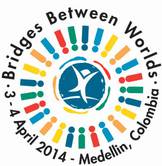 What was Bridges between Worlds?Bridges between Worlds was a global conference that aimed to advance the international community’s understanding regarding the place of assistance victims of mines and other explosive remnants of war in broader contexts. It was hosted by Colombia with the assistance of the Implementation Support Unit (ISU) and with financial support provided by both Colombia and the European Union through its Council Decision in support of the 2010-2014 Cartagena Action Plan. Bridges between Worlds was held further to the understanding of the States Parties to the Anti-Personnel Mine Ban Convention that victim assistance should be integrated into broader national policies, plans and legal frameworks related to human rights, disability, health, education, employment, development and poverty reduction. It has also been noted that other contexts that could be considered include social security and transitional justice. Assisting landmine victims is a specific promise made through the Anti-Personnel Mine Ban Convention but victim assistance is not as world unto itself. Rather, it is part of – or should be part of – other worlds.
Why was Bridges between Worlds convened?Fifteen years after the entry-into-force of the Convention – and on the eve of the Convention’s third five-year review – it was timely to ask some fundamental questions about the bridges between the world of landmines and broader domains such as disability, health, education, employment, development and poverty reduction.
Bridges between Worlds addressed these questions. This was done particularly with a view to considering how victim assistance may be pursued by the States Parties to the Anti-Personnel Mine Ban Convention following their Third Review Conference. In addition, the outcomes of this conference are more broadly applicable given the consistent approach taken to victim assistance by all relevant instruments of international humanitarian law.
Where and when did Bridges between Worlds take place?Bridges between Worlds took place on 3-4 April 2014 at the Intercontinental Hotel in Medellin, Colombia. The location of the event was significant for a number of reasons, including the fact that Medellin is located in the Department of Antioquia – the most mine-affected in the country, registering, since 1990, a fifth of all landmine casualties in Colombia. Furthermore, Bridges between Worlds took the issue of victim assistance back to Colombia where, in 2009 at the Cartagena Summit on a Mine-Free World, the international community adopted the Cartagena Action Plan, which sees States commit to promote and protect the welfare and human rights of landmine survivors and mine-affected communities.
Who participated in Bridges between Worlds?All States were invited to Bridges between Worlds as all States, be they parties to the Anti-Personnel Mine Ban Convention or not, can play a role in achieving the full and effective participation of women, girls, boys and men living with an impairment in their societies on an equal basis with others. The following 36 States were represented at the conference. Albania, Austria, Bosnia and Herzegovina, Belgium, Brazil, Cambodia, Canada, Chile, China, Colombia, Costa Rica, Ecuador, El Salvador, Ethiopia, France, Ghana, Honduras, India, Italy, Japan, Jordan, the Lao PDR, Lebanon, Mali, Mexico, Mozambique, Nicaragua, Norway, Peru, Serbia, Spain, Sudan, Tajikistan, Thailand, Uganda and the United States of America. In addition, the participation of relevant international and non-governmental organizations was vital to ensuring the success of Bridges between Worlds, with dozens of these organizations present. In total, approximately 300 delegates took part in the Conference. |




